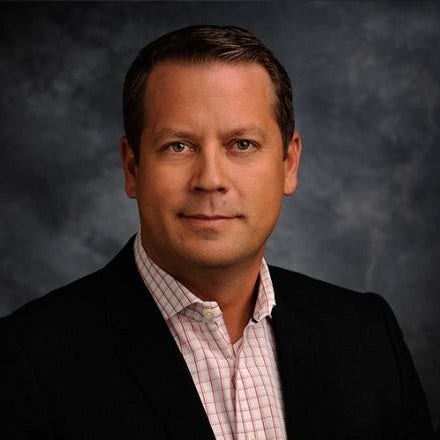Sumo Logic On Going Partner-First: ‘It’s All About That Partner Experience’
‘Just as companies look at the end customers they want to go to, [that’s] how we’ve approached looking at the partner community and determining what paths to market our customers, either existing or desired, often engage with the most,’ says Timm Hoyt, senior vice president of global partners and alliances at Sumo Logic.

Over the last year, Sumo Logic has transitioned itself into a partner-first model with big plans to capture the market.
“Just as companies look at the end customers they want to go to, [that’s] how we’ve approached looking at the partner community and determining what paths to market our customers, either existing or desired, often engage with the most,” Timm Hoyt, senior vice president of global partners and alliances at Redwood City, Calif.-based Sumo Logic, told CRN.
He said the cloud-native SaaS analytics firm looks to attract four different types of partners.
[Related: The 2023 Tech Innovator Awards]
“For instance, a traditional solution reseller, we’ve identified seven core attributes that to us make up the ideal reseller partner,” he said. “That helps us look at our existing community and focus on who is already part of the family as well as who we want to go target specifically. By being thoughtful, speaking to what is the strategy, what are the economics, what is the type of partner we are to our various pillars, that allows us to engage in the most meaningful way that in most cases produces the best outcomes.”
In summer 2022, the company had about 300 MSP partners. Since being more partner focused, it has about global 500 partners, and growing.
Garrett Slank, director of alliance strategy at Converge Technology Solutions, said Sumo Logic going partner first was a key factor for Converge to invest more into that vendor relationship.
“Sumo Logic already has great technology, but introducing a partner first culture shows us that they are committed to growing with us,” he told CRN. “It has allowed our reps in the field to engage more frequently with each other. In the past year this has enabled rapid pipeline growth to set us up for future success.
He said Converge’s clients are facing “never-ending growth of data in more and more complex on prem and cloud environments” and Sumo allows them to help simplify log management and provide real time threat intelligence to that hybrid environment.
Check out what Hoyt had to say about being partner-first in the exclusive interview with CRN.

I want to talk first about Sumo Logic’s partner program. What strides are you making there?
I think we’re making a number of good strides. In its multiple phases as a company, we’re now in what we call Sumo 3.0. The first two phases went from ideation to funding, then the second phase was after product market fit and an IPO. That was very tactical with how we engage with partners. The company has always had a positive viewpoint on partners, but there was never a truly proactive strategic element of how partners play a role inside of Sumo’s business, and that changed in Sumo 3.0. as we looked to scale. We were scaling through customer solutions in what we’re bringing, new innovation, to market through organic and inorganic growth and acquisitions that company has made over the past six or eight quarters. It’s also how do we get closer to the customer through partners. The progress has been notable. An example would be in August of last year we went partner first. What that means to us is a combination with the most evident piece: the partner experience and how the program is built to support that partners business and the type of partner they are. Are they a solution reseller? Are they a MSP? Are they a MSSP? That partner-first motion really is the best evidence point because it’s throughout the entire organization.

In May, Sumo Logic was acquired by Francisco Partners and named a new president and CEO Joe Kim. What does that mean for the company and what changes should partners expect to see from that?
Yeah, look, it’s exciting times. I think the important part is this acquisition is about a change in ownership, not a change in the fundamentals of Sumo. So that’s the number one thing for folks who already know us to feel confident that there’s going to be continued consistency and focus in areas that we’ve already been demonstrating in the market. Joe brings a very rich history as an operator, not just as a member of Francisco partners, but he’s been a very successful operator at companies like HPE and Citrix. I think Ramin [Sayar, former president and CEO] was an amazing leader who helped get this company through 1.0, 2.0 into 3.0. Joe is going to be able to build on the foundation there and bring some new ideas and pace that we’re all excited about. Citrix is a partner-centric company too so I’m excited about that mindset being further infused to what was already in place here.
When talking to partners, what are their biggest pain points and how are you trying to help them with that?
It’s a variety of things. I think number one right now is how do I remain the most relevant to my customer or prospect. That’s always there but it gets accelerated in times of financial headwinds. So we’re helping our customers understand the concrete business outcomes that we’re delivering that are helping us stay in the top three to four prioritized budget lists. Those two are very specifically the cybersecurity of cloud applications and workloads, and then that reliability of those same workloads. The world is not getting any less dynamic in terms of intentional and unintentional security threats. As customers continue to migrate to the cloud and then build and deploy SaaS applications, what they had protecting their world in the more traditional on-prem space doesn’t translate. So that’s a business need that some customers aren’t necessarily thinking about as they make that migration or build new applications. That’s a great way for partners to operate in that solutions-consultative manner.

What's your biggest challenge when it comes to helping partners?
The biggest challenge is [from] our partners in that they’re looking at how do they take care of their customers, how do they take care of their employees and what is the vendor ecosystem they need most to support that. Because Sumo has not had that partner-first motion up until eight months ago, we were often known of but not known. Like a lot of relationships, it takes a little bit of time to become known and trusted. That’s the biggest challenge we have is making sure that we’re having the right conversation with the most appropriate people and outlining that story of where we’re focused, what we’re doing, what that partner experience looks like, what the economic story looks like and then determining if there’s a fit. It’s getting to that point of we think we can be a strategic provider alongside these partners.
What is Sumo Logic doing to attract the right partner base?
One is we’re getting more present at some of the larger partner-centric forums, two is we’re working very closely with some ecosystem partners of ours. AWS would be a great example. Gigamon would be another example where those two have very rich and extensive partner communities and as we have defined solutions that solve business problems for customers, we’re asking our friends, ‘Hey, who do you know that may fit this ideal profile that we can go work on together?’ Ultimately, this is where we find most partners want to get to anyways. The more places I can build a solution and monetize that solution through the technology and other services, the better. It’s working with some of our friends as well that strengthens their message and value prop with us. It gets our message out to automate some places faster than we would on our own and ultimately opens the eyes of some partners that may not have really known about us or what we’re doing.

Where do you think Sumo Logic will see the most revenue growth by the end this year?
I think we will continue to see security be the leading solution. We’ve seen in the past two quarters well over 50 percent of our new logo lands have landed with the security use case. Many of those are also in the first year starting to look at the application and observability side, but definitely the security side will be the lead horse there.
What can we expect to see from Sumo Logic for the rest of the year?
One is being in front of the partners and helping them to understand how our solution has direct correlation to customer pain points that have budget tied to it. Second is how do we do more together with some of their ecosystem vendors in AWS or Gigamon. Then third is we are finalizing our partner program from Sumo that will provide very specific competencies, benefits and accountabilities to complement some of the foundational elements we’ve launched. For instance, we have a very lucrative incentive that launched two partners. We have launched a very pragmatic accreditation program that helps get the partners sufficient to go have that level-one conversation and engage us. Then there’s pathways to get to level one, level two and level three. It’s all about that partner experience and what we can do to help them open up more share of wealth opportunities and existing customers, help them how they go acquire new customers and then what is the economy that’s stimulated by a Sumo Logic solution.